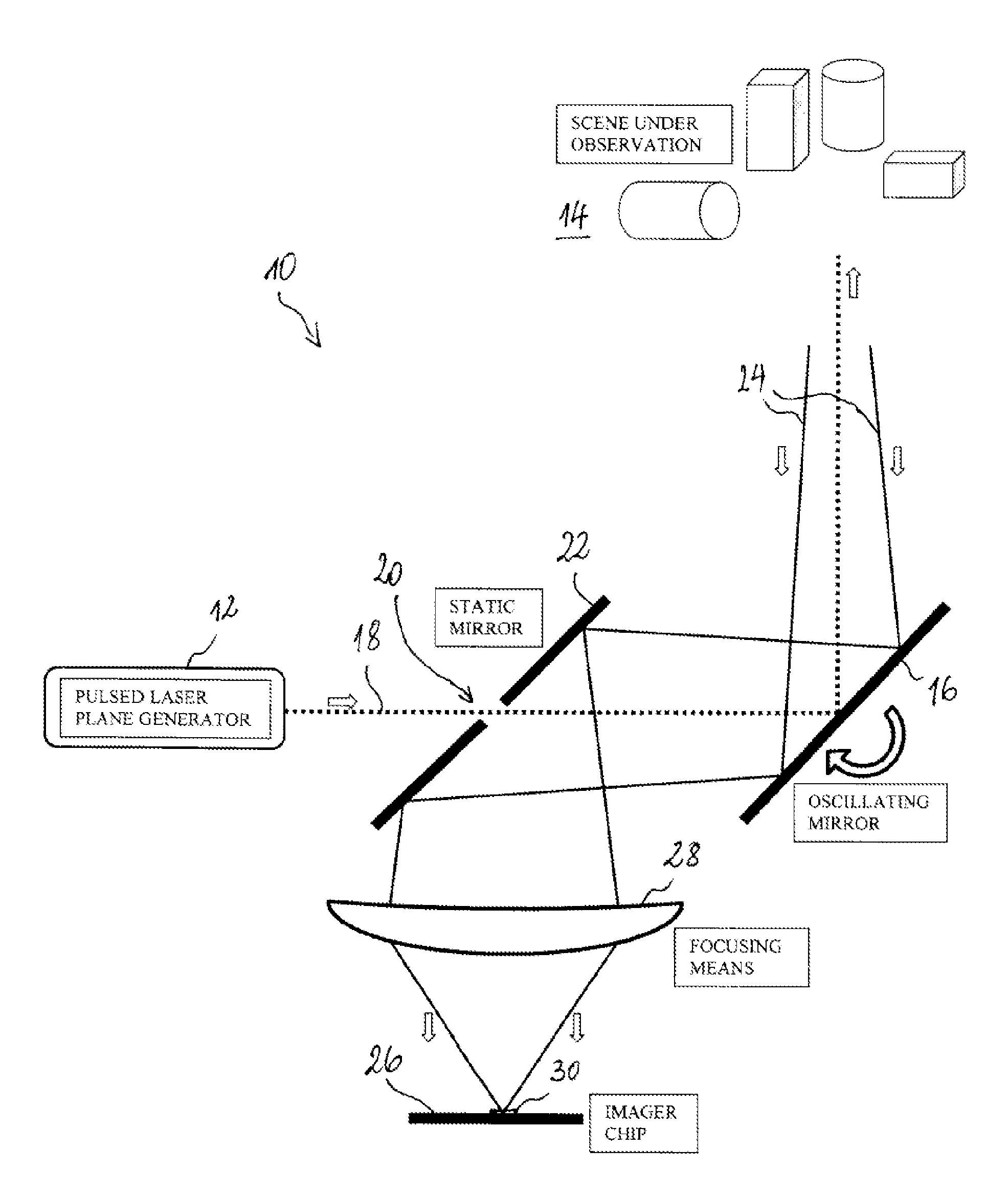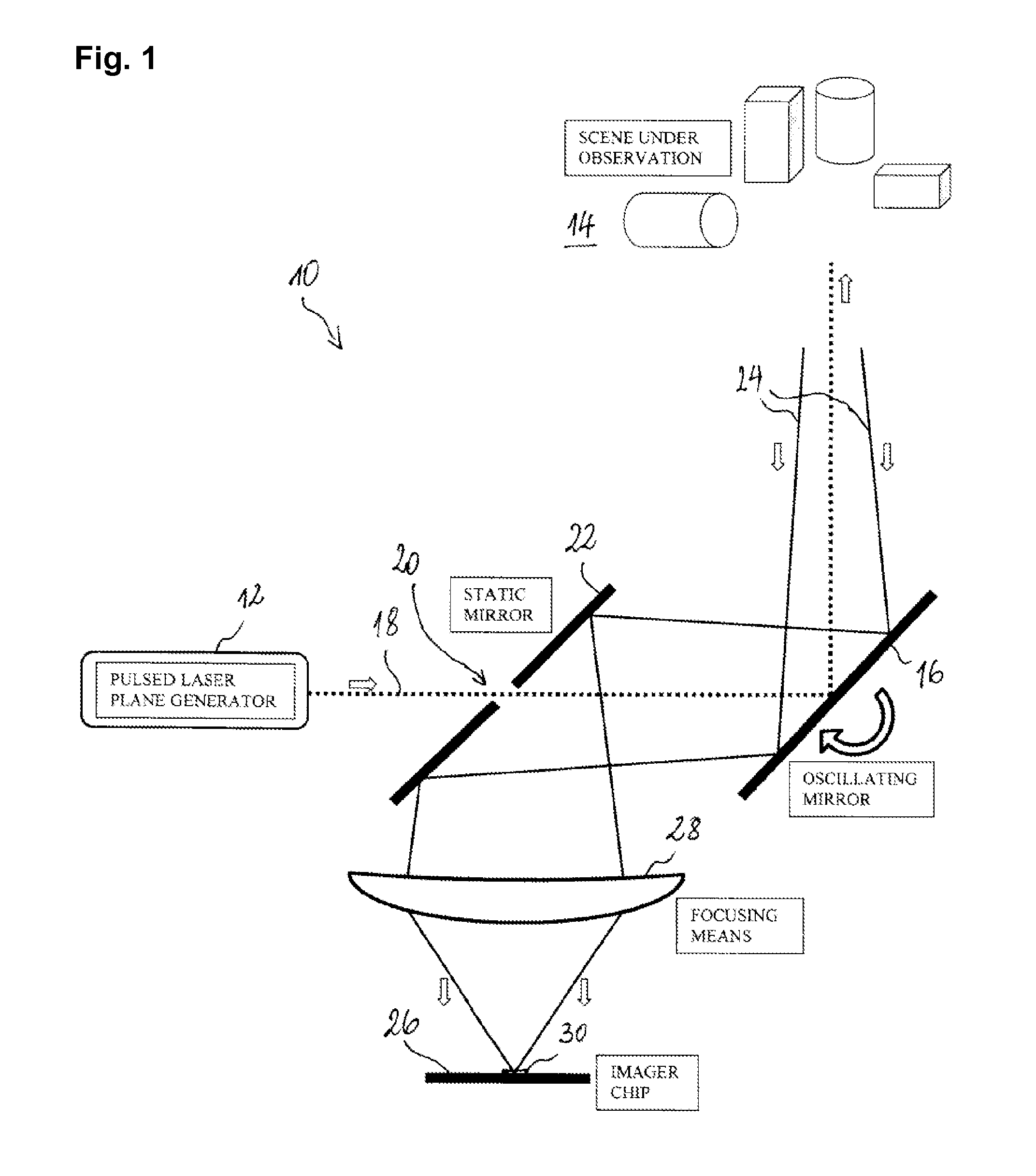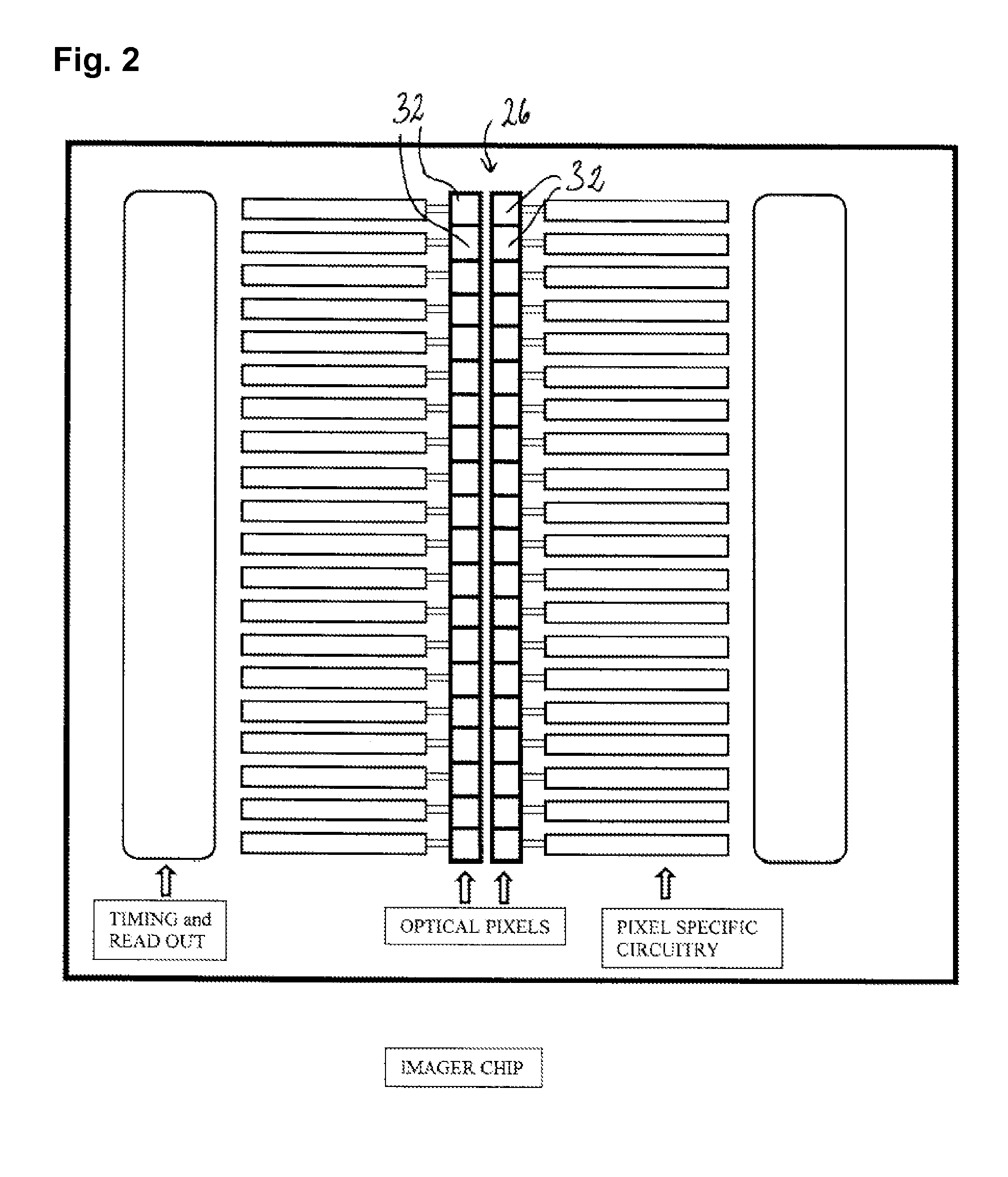Scanning 3D imager
- Summary
- Abstract
- Description
- Claims
- Application Information
AI Technical Summary
Benefits of technology
Problems solved by technology
Method used
Image
Examples
Embodiment Construction
[0038]FIG. 1 shows a scanning 3D imager 10, comprising a pulsed laser source 12 as a light source. The pulsed laser beam is fanned out with a cylindrical lens (not shown) and directed into the scene 14 to be imaged by means of an oscillating scanning mirror 16 arranged in the light path of the laser beam 18. The laser beam thus successively illuminates slices of the scene 16 as it is swept through the scene transversally to the plane in which the laser beam has been fanned out. In FIG. 1, the laser beam 18 is fanned out perpendicular to the plane of the sheet. Between the pulsed laser source 12 and the oscillating mirror, the fan-shaped laser beam passes a slit 20 arranged in a static deflection mirror 22 arranged at 45°, which directs light that is scattered back 24 from the scene 14 onto an imager chip 26. A cylindrical focusing lens 28 focuses oriented in such a way that the illuminated slices of the scene are imaged thereon.
[0039]FIG. 2 schematically shows the imager chip 26 of ...
PUM
 Login to View More
Login to View More Abstract
Description
Claims
Application Information
 Login to View More
Login to View More - R&D
- Intellectual Property
- Life Sciences
- Materials
- Tech Scout
- Unparalleled Data Quality
- Higher Quality Content
- 60% Fewer Hallucinations
Browse by: Latest US Patents, China's latest patents, Technical Efficacy Thesaurus, Application Domain, Technology Topic, Popular Technical Reports.
© 2025 PatSnap. All rights reserved.Legal|Privacy policy|Modern Slavery Act Transparency Statement|Sitemap|About US| Contact US: help@patsnap.com



